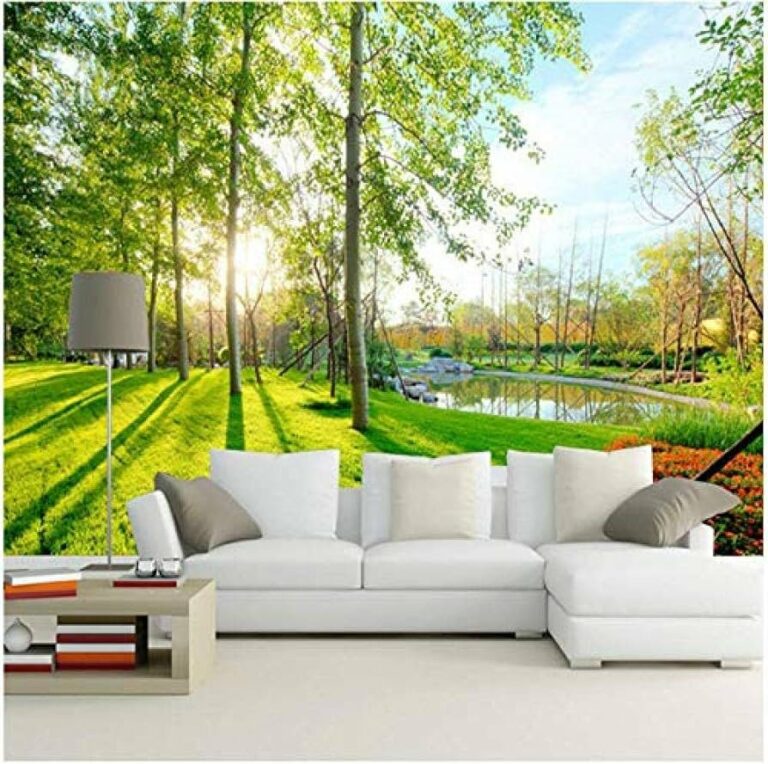Can Eco-Friendly Furniture Work For Commercial Spaces?
Can eco-friendly furniture be used in commercial spaces? Absolutely! Gone are the days when sustainability and style were mutually exclusive. Today, businesses are embracing the concept of eco-friendly furniture to create sustainable and inviting environments for their customers and employees.
From sleek office desks made of reclaimed wood to chic lounge chairs crafted from recycled materials, the options are endless. Incorporating eco-friendly furniture not only reduces your environmental footprint but also enhances the overall aesthetic appeal of your commercial space. So, let’s explore the world of eco-friendly furniture and delve into the countless benefits it brings to commercial settings.
Can eco-friendly furniture be used in commercial spaces?
Eco-friendly furniture has gained significant popularity in recent years as individuals and businesses become more conscious of their environmental impact. While it is often associated with residential spaces, there is a growing trend in using eco-friendly furniture in commercial spaces as well. This article delves into the question of whether eco-friendly furniture can be effectively utilized in commercial environments, discussing its benefits, challenges, and practical considerations.
The Benefits of Eco-Friendly Furniture in Commercial Spaces
1. Sustainability
One of the primary reasons for incorporating eco-friendly furniture into commercial spaces is its sustainability. By opting for furniture made from sustainable materials and manufactured using environmentally friendly processes, businesses can significantly reduce their carbon footprint. Sustainable materials like bamboo, reclaimed wood, and recycled plastics can be used to create stylish and durable furniture pieces that contribute to a healthier planet.
2. Health and Well-being
Eco-friendly furniture often prioritizes the use of non-toxic and low-VOC (volatile organic compounds) materials, which can improve indoor air quality and promote better health and well-being in the workplace. Volatile organic compounds are chemicals commonly found in traditional furniture that can have detrimental effects on human health. By using eco-friendly alternatives, businesses can create a healthier and more comfortable environment for employees and customers alike.
3. Brand Reputation and Image
In today’s environmentally conscious world, businesses that showcase a commitment to sustainability and eco-friendly practices often enjoy a positive brand reputation and image. Integrating eco-friendly furniture into commercial spaces sends a strong message to customers, employees, and stakeholders about a company’s values and its dedication to sustainability. This can lead to increased customer loyalty, employee satisfaction, and overall brand recognition.
4. Cost Savings
Contrary to popular belief, investing in eco-friendly furniture can result in long-term cost savings for businesses. While the initial upfront cost may be slightly higher compared to conventional furniture, eco-friendly options are designed to be durable and long-lasting. With their high-quality construction and materials, these pieces tend to require less frequent replacements, reducing overall furniture costs over time.
5. Compliance with Green Building Certifications
Many commercial spaces strive to achieve green building certifications such as LEED (Leadership in Energy and Environmental Design). By incorporating eco-friendly furniture into their spaces, businesses can earn points towards these certifications. Utilizing sustainable furniture not only aligns with the environmental objectives of green building programs but also demonstrates a commitment to sustainable practices.
Challenges of Implementing Eco-Friendly Furniture in Commercial Spaces
1. Availability and Accessibility
One of the challenges businesses face when considering eco-friendly furniture for their commercial spaces is the limited availability and accessibility of such options. While the market for sustainable furniture is growing, it is still relatively niche compared to conventional furniture. Finding a wide range of eco-friendly furniture pieces that suit commercial needs, such as office desks, conference tables, and seating solutions, can sometimes be challenging.
2. Cost Considerations
As mentioned earlier, eco-friendly furniture may come with a higher initial cost compared to conventional options. This cost disparity can pose a challenge for businesses operating on tight budgets. However, it is crucial to consider the long-term cost savings and benefits associated with eco-friendly furniture, such as reduced maintenance and replacement expenses.
3. Design Limitations
Another challenge businesses may face when incorporating eco-friendly furniture into commercial spaces is the perception of limited design options. While eco-friendly furniture has come a long way in terms of design versatility, some businesses may still perceive it as less trendy or stylish compared to traditional furniture choices. However, with advancements in sustainable design, businesses can now find a wide array of aesthetically appealing eco-friendly furniture options to suit various commercial settings.
4. Maintenance and Durability
Maintaining and ensuring the durability of eco-friendly furniture in commercial spaces can be a concern for some businesses. Sustainable materials, although designed to be durable, may require specific care and maintenance to retain their quality and longevity. It is essential for businesses to understand the specific maintenance requirements of eco-friendly furniture they choose to ensure its optimal performance.
Implementing Eco-Friendly Furniture in Commercial Spaces
1. Research and Selection
When considering eco-friendly furniture for commercial spaces, thorough research is crucial. Businesses should seek out reputable manufacturers and suppliers known for their commitment to sustainability. It is also important to assess the certifications and eco-labels associated with the furniture to ensure compliance with environmental standards.
2. Customization Options
To address the design limitations of eco-friendly furniture, many manufacturers offer customization options. Businesses can work closely with furniture designers and suppliers to create bespoke pieces that meet their specific functional and aesthetic requirements. Customization ensures that eco-friendly furniture seamlessly integrates into the overall design scheme of the commercial space.
3. Long-Term Planning and Budget Allocation
Integrating eco-friendly furniture into commercial spaces requires careful long-term planning and budget allocation. Businesses should consider the durability and life cycle of eco-friendly furniture when assessing its cost-effectiveness. By factoring in the longer lifespan of sustainable furniture, businesses can create realistic budgets that accurately reflect the financial benefits of investing in eco-friendly options.
4. Employee Engagement and Education
Introducing eco-friendly furniture into commercial spaces is an opportunity to engage employees and educate them about sustainability. Sharing information about the benefits and features of eco-friendly furniture can foster a sense of pride and ownership among employees. Additionally, implementing sustainable practices beyond furniture, such as recycling and energy conservation programs, can further support the overall sustainability goals of the business.
The use of eco-friendly furniture in commercial spaces is a viable and beneficial option that aligns with sustainable business practices. While challenges such as availability and cost considerations exist, the numerous advantages, including sustainability, health benefits, and positive brand image, make it a worthwhile investment. By conducting thorough research, customizing options, and implementing long-term planning, businesses can successfully incorporate eco-friendly furniture into their commercial spaces and contribute to a greener future.
Frequently Asked Questions (FAQs)
– Can eco-friendly furniture be as durable as conventional furniture?
– Are there eco-friendly furniture options available for different commercial settings, such as offices, restaurants, and hotels?
– How can businesses ensure the sustainability credentials of eco-friendly furniture they purchase?
– What are the certifications and eco-labels to look for when selecting eco-friendly furniture?
– Does using eco-friendly furniture have any impact on employee productivity?
– Are there any grants or incentives available for businesses adopting eco-friendly practices, including furniture choices?
– Can eco-friendly furniture contribute to achieving green building certifications?
– How can businesses educate their employees about the benefits of eco-friendly furniture?
– What are some of the maintenance considerations for eco-friendly furniture in commercial spaces?
– Are there any financial benefits associated with using eco-friendly furniture in commercial spaces?
Watch + Learn: Eco Friendly Furniture 101
Frequently Asked Questions
Can eco-friendly furniture be used in commercial spaces?
1. What are the benefits of using eco-friendly furniture in commercial spaces?
Eco-friendly furniture in commercial spaces offers multiple benefits, including reduced environmental impact, improved indoor air quality, and a positive brand image. It helps in preserving natural resources, minimizing waste, and promoting sustainability in the business environment.
2. Is eco-friendly furniture as durable as traditional furniture?
Yes, eco-friendly furniture can be just as durable as traditional furniture. Many manufacturers use high-quality, sustainable materials and innovative construction techniques to ensure longevity and performance. With proper care and maintenance, eco-friendly furniture can withstand the demands of commercial spaces.
3. Where can I find eco-friendly furniture suitable for commercial use?
There are various options available for sourcing eco-friendly furniture for commercial spaces. You can explore specialized vendors, sustainable furniture brands, and online marketplaces that curate environmentally friendly products. It’s important to look for certifications such as Forest Stewardship Council (FSC) and Cradle to Cradle (C2C) to ensure the furniture meets recognized sustainability standards.
4. Can eco-friendly furniture be customized to fit specific commercial space requirements?
Yes, eco-friendly furniture manufacturers often provide customization options to meet specific commercial space requirements. They can tailor the design, dimensions, and materials to match the desired aesthetic and functionality of the space. Customization allows for a seamless integration of eco-friendly furniture into the commercial environment.
5. Is eco-friendly furniture more expensive than traditional furniture?
Eco-friendly furniture can sometimes have a higher upfront cost compared to traditional furniture due to the use of sustainable materials and responsible manufacturing processes. However, the long-term benefits, such as energy savings and reduced environmental impact, can offset the initial investment. Additionally, as sustainability becomes more mainstream, the price difference is gradually decreasing.
6. How can eco-friendly furniture contribute to a healthier work environment in commercial spaces?
Eco-friendly furniture is often made with non-toxic materials, free from harmful chemicals commonly found in conventional furniture. This promotes better indoor air quality, reducing the risk of allergies and respiratory issues. Additionally, sustainable materials used in eco-friendly furniture are often more natural and organic, creating a healthier and more comfortable work environment.
7. Are there any regulations or certifications that ensure the eco-friendliness of commercial furniture?
Yes, several certifications and regulations guarantee the eco-friendliness of commercial furniture. The Forest Stewardship Council (FSC) certification ensures responsible sourcing of wood materials. The Cradle to Cradle (C2C) certification focuses on the entire lifecycle of the product, considering factors such as material health, recyclability, and renewable energy use. It’s important to look for these certifications when selecting eco-friendly furniture for commercial spaces.
Final Thoughts
Eco-friendly furniture can indeed be utilized in commercial spaces, promoting sustainability and creating a positive impact on the environment. Its use not only contributes to reducing the carbon footprint of businesses but also aligns with the growing demand for environmentally conscious practices. Incorporating eco-friendly furniture in commercial spaces enhances the overall aesthetic appeal, while also conveying a sense of social responsibility. By choosing sustainable materials and manufacturing processes, businesses can create a welcoming and eco-conscious atmosphere for their customers and employees. Therefore, the integration of eco-friendly furniture in commercial spaces is a viable option that should be considered by businesses seeking to adopt more sustainable practices.


